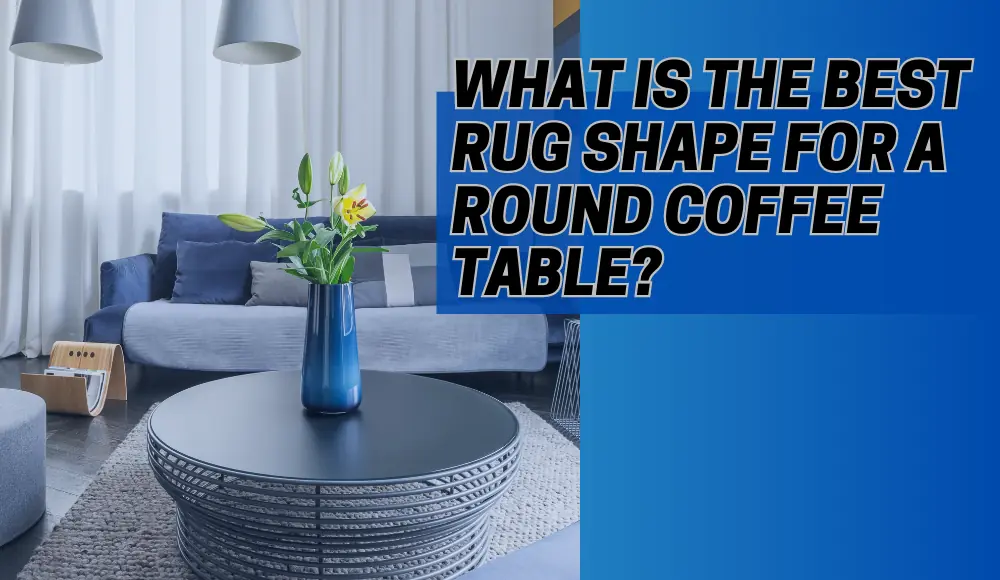Last updated on May 26th, 2024 at 06:27 am
Dust mite allergies can turn our homes into battlefields. These microscopic creatures thrive in our carpets, triggering allergic reactions, discomfort, and potential health issues. Rugs for dust mite allergy have become a lifeline for those seeking relief from these pervasive allergens.
Understanding the Impact of Rugs on Dust Mite Allergies
Dust mites, these minuscule creatures invisible to the naked eye, feed on our shed skin cells, particularly in warm, humid environments. Rugs, due to their textile composition and the cozy environment they offer, become a haven for these pests. But not all rugs are created equal in their susceptibility to harboring dust mites.
Do Rugs Attract Dust Mites?
Yes, rugs are a favorite dwelling place for dust mites. Dust mites thrive in environments where the relative humidity is above 50%, making them particularly attracted to carpets and area rugs. Their porous nature and ability to trap dust and debris create an ideal habitat for these allergens.
Types of Rugs Ideal for Dust Mite Allergy Sufferers
Choosing the right rug material can significantly impact dust mite infestation. Opt for low-pile or flat-weave rugs, as they provide fewer hiding spots for dust mites compared to thicker, high-pile options.
- Low Pile Rugs: Opt for rugs with a low pile or those that are flat-woven. These rugs have shorter fibers and are less likely to trap dust mites compared to high-pile rugs, like shaggy or high-looped rugs.
- Natural Fiber Rugs: Rugs made from natural fibers such as sisal, jute, or cotton can be a good choice as they are less likely to trap dust and are easier to clean. They have a tight weave, making it harder for dust mites to accumulate.
- Washable Rugs: Consider washable or machine-washable rugs. These can be regularly cleaned, reducing the presence of dust mites. Ensure that the rug material can withstand washing without damage.
- Allergen-Free Rugs: Some rugs are specifically designed to resist dust mites and allergens. Look for rugs labeled as hypoallergenic or those treated with anti-allergen solutions.
- Rugs with Anti-Microbial Treatment: Certain rugs come treated with anti-microbial agents, which can hinder the growth of dust mites and other allergens.
- Rug Underlays or Encasements: Using rug underlays or encasements designed to prevent allergens from penetrating the rug and reaching the floor beneath can be helpful. These barriers can block dust mites from settling in your rug.
- Regular Cleaning and Maintenance: Regardless of the type of rug, regular vacuuming and cleaning are essential. Use a vacuum cleaner with a HEPA filter, which is more effective at trapping small particles like dust mites and their waste.
Additionally, consider minimizing the number of rugs in your home or using rugs that are easy to move and clean, allowing you to regularly wash or replace them as needed.
Selecting the Right Materials and Fibers
The material and construction of a rug play a crucial role in managing dust mite allergies.
Recommended Materials to Minimize Dust Mites
- Natural Fibers: Wool, cotton, and bamboo are excellent choices. They are breathable and less hospitable to dust mites compared to synthetic fibers.
- Synthetic Materials: Nylon and polyester rugs are less prone to harboring dust mites due to their tightly woven structure.
Reddit Recommendations on Best Rugs for Dust Mite Allergy
Reddit, a popular forum, often shares practical experiences and recommendations. Here are some main points to the topic shared by users:
| Key Points |
|---|
| Vacuuming carpets with a HEPA-filtered vacuum twice a week helps, but prefers hardwood floors. |
| Recommends HEPA-filtered vacuum with a certified allergen seal for effective cleaning. |
| Transitioned from carpet to hardwood due to feeling terrible with carpet; prefers hardwood floors. |
| Advocates for regular cleaning, removal of carpet due to difficulty in cleaning, and the importance of managing allergens in the house. |
| Uses a carpet in the bedroom but practices regular cleaning routines to manage dust mite allergies. |
| Suggests shampooing carpets every few months and using quality vacuum cleaners for deep cleaning. |
| Disagrees with shampooing carpets, recommends allergen spray and vacuum for better results. |
| Recommends considering allergen immunotherapy and managing home humidity; suggests managing allergy rather than avoiding allergens. |
| Experiences severe dust mite allergy and discusses reactions to unwashed sheets but manages relatively well. |
| Shares experience with Shark vacuum and other tools to manage dust mite allergies; talks about the impact of environmental changes on allergies. |
| Suggests routine cleaning and managing humidity in the house without making major adjustments. |
| Recommends steam cleaning rugs regularly as a way to eliminate dust mites. |
| Prefers washable rugs and suggests using house slippers to avoid direct contact with rugs. |
| Recommends professional cleaning for rugs, provides resources for remediation and cleaning. |
| Emphasizes the need for a vacuum with a HEPA filter to manage dust mite allergies. |
| Shares personal experience managing a single rug by regular vacuuming and occasional steam cleaning. |
| Suggests considering a single rug, highlighting the potential impact on allergies depending on severity. |
Understanding the Impact of Dust Mites on Allergies
Dust mites, especially their waste and decaying bodies, are potent allergens, triggering various symptoms in susceptible individuals.
How Dust Mites Worsen Allergies
These microscopic creatures’ waste contains allergens that, when inhaled, can lead to sneezing, itching, congestion, and, in severe cases, asthma attacks.
Features to Look for in Rugs for Dust Mite Allergies
When choosing a rug to combat dust mite allergies, consider the following features:
- Hypoallergenic: Seek rugs labeled as hypoallergenic or allergy-resistant, specifically designed to combat dust mites.
- Easy to Clean: Opt for rugs that can withstand frequent washing or deep cleaning methods.
Effective Cleaning Methods for Reducing Dust Mites
Regular cleaning is essential to control dust mites in rugs. But what methods are most effective?
Recommended Cleaning Methods
- Frequent Vacuuming: Use a vacuum cleaner with a HEPA filter to effectively capture dust mites.
- Steam Cleaning: This method can eliminate dust mites effectively without the need for harsh chemicals.
Hypoallergenic Rugs and Treatments
Can rugs be treated or coated to reduce dust mite presence?
Hypoallergenic Options
Yes, some rugs are treated with anti-allergen treatments that help reduce dust mite populations, enhancing their hypoallergenic properties.
Natural vs. Synthetic Rugs: A Comparison
Are natural or organic rugs better for reducing dust mites compared to synthetic options?
Natural vs. Synthetic
While natural fibers have their benefits, certain synthetic materials can also be effective in minimizing dust mite presence due to their construction.
Rug Pile Thickness and Dust Mite Infestation
Do thick-pile rugs harbor more dust mites than low-pile or flat-weave rugs?
Thickness and Dust Mites
Thicker rugs with a high pile offer more hiding spots for dust mites compared to low-pile or flat-weave options.
Maintaining Cleanliness: How Often Should Rugs Be Cleaned?
Regular maintenance is crucial in managing dust mite allergies.
Cleaning Frequency
Experts recommend vacuuming rugs at least twice a week and deep cleaning them every 3-6 months to control dust mite populations effectively.
DIY Methods and Design Considerations
Are there DIY methods or specific rug designs that can aid in reducing dust mites for allergy sufferers?
DIY Solutions and Design Considerations
- Natural Solutions: Using essential oils like eucalyptus or tea tree oil in homemade cleaning solutions can deter dust mites.
- Design Considerations: Opt for rugs with minimal textures and intricate patterns, as these are less likely to trap dust and allergens.
Expert Data Comparison Table
Here’s a comparison table summarizing the efficacy of various rug materials in combatting dust mites:
| Rug Material | Effectiveness Against Dust Mites |
|---|---|
| Wool | Moderate |
| Cotton | Low |
| Nylon | High |
| Polyester | High |
| Bamboo | Moderate |
Conclusion
In the quest for a dust mite-free environment, choosing the right rugs plays a significant role. Opting for materials that deter dust mites, employing effective cleaning methods, and considering specific rug designs can help alleviate allergy symptoms.
Remember, while no rug can be completely dust mite-free, making informed choices and regular upkeep can significantly reduce their presence, providing a cleaner, allergen-controlled living space.
For further in-depth information and research on dust mite allergies and rug choices, refer to these authoritative sources:
Remember, your home should be your sanctuary, and with the right rug choices and maintenance, you can significantly reduce the impact of dust mite allergies for a healthier, happier life.


